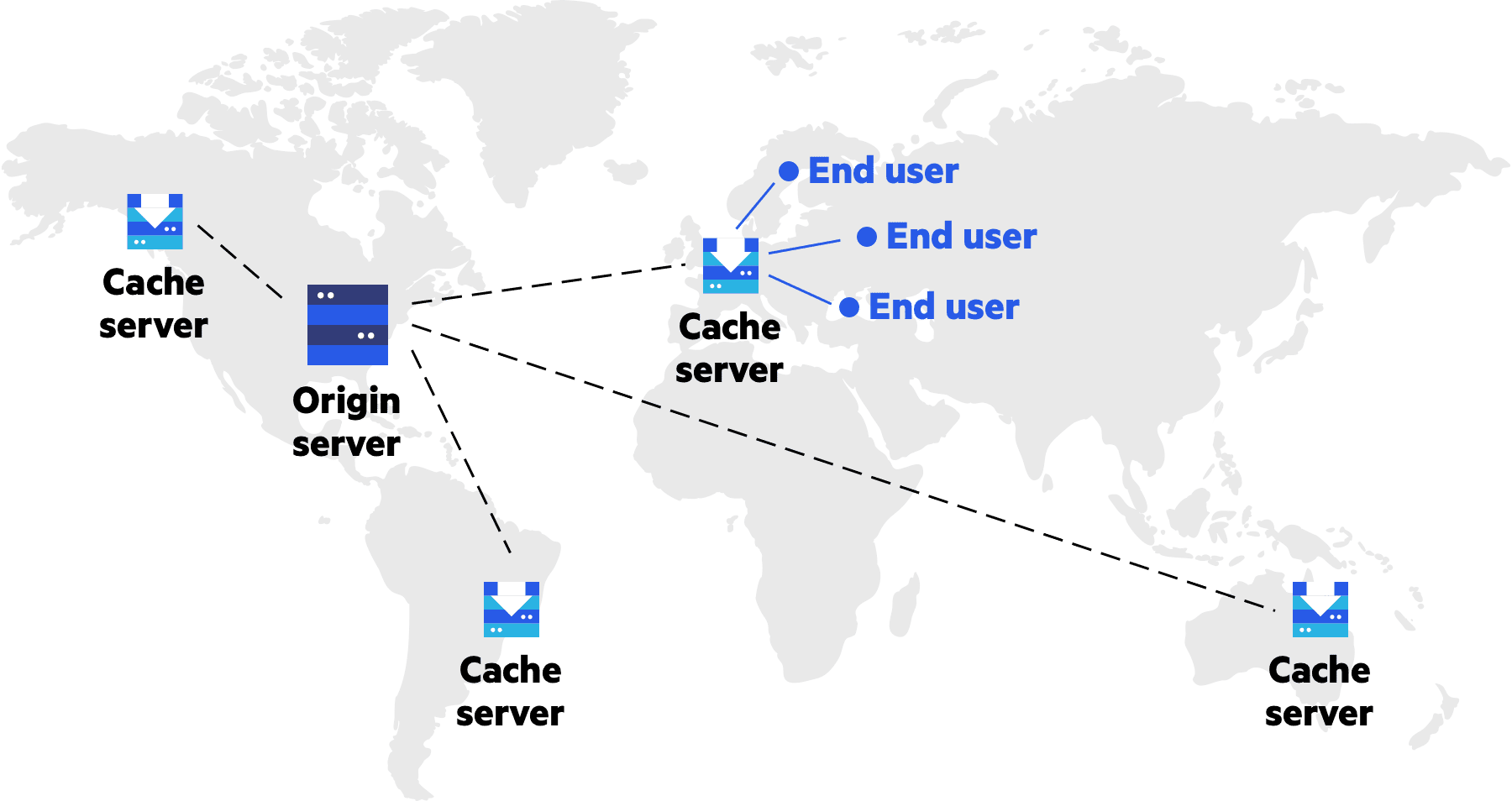What is Node Cache?
Caching is at the heart of Content Delivery Network(CDN) services. Similar to how browser caching stores files on a hard drive, where they can be more rapidly accessed, a CDN moves your website content to powerful proxy servers optimized for accelerated content distribution.
Caching works by selectively storing website files on a CDN cache proxy servers, where they can be quickly accessed by website visitors browsing from a nearby location.
What benefits does CDN caching offer?
1. Cut down on bandwidth costs
Delivering content from CDN cache proxies removes the burden from the origin (backend) server, significantly reducing bandwidth costs associated with serving content to numerous visitors. For most sites, bandwidth costs can be reduced by as much as 40% to 80%, depending on the percentage of cacheable content.
2. Improve user experience
A globally distributed network of cache proxy servers, CDNs bring your website’s content closer to all visitors, no matter where they are. Having this content delivered from a local server significantly improves access speed and user experience.
3. Ensure reliable content delivery
Modern CDNs have traffic capacity far exceeding most normal enterprise network capabilities. Where a self-hosted website may be easily disrupted by unexpected traffic peaks or denial of service attacks, CDN cache servers are highly resilient and secure. As a result, they are stable during peak traffic instances.
Static files will be cached as a priority
A majority of all website content consists of static pre-formatted files that are not expected to change over time (or for different users). These files are the default candidates for caching, as opposed to dynamic files, which are generated on-the-fly based on information from a database.
For example: Static e-store template with dynamically-generated product information. Typical static files are:
- Template Images
- Videos
- Music
- JavaScript
- CSS Files
How do cache servers work?
Proxy cache servers are the building blocks of a CDN network data centers, which are strategically situated around the globe. These points of presence (PoP) are selected based on traffic patterns of individual regions.
Highly active locations with numerous users may have several data centers. On the other hand, remote locations with few users may have only one PoP to cover a large geographic region.
Once in place, cache servers act as a repository for website content, providing local users with accelerated access to cached files. The closer a cache server is to the end user, the shorter the connection time needed for transmission of website data.
Hardware wise, a typical individual cache server is a content delivery powerhouse, with bolstered RAM and SSD storage resources. Being the faster option, RAM is used for high-priority resources, while SSD is used for your least requested, but still cacheable web files.

Offline Cache
If offline caching is enabled, you can use the CDN to cache content when your source site is faulty, that is, you cannot pull resources back to the source.
If the node has a cache, the cached content is returned. That is, the content in the mission has expired, and it still responds to the expired content until the source station recovers and can return to the source normally.
If the node has no cache, an error message indicating that the source station is faulty is returned.
Cache Prerefresh
The Content Delivery Network (CDN) provides the basic cache configuration capability. The CDN can set the cache expiration time based on various rules, such as the specified service type, directory, and URL. In this way, the node cache resources are periodically cleared and the source station retrieves the latest resources for re-caching.
In addition, the CDN provides the ability to cache refresh, specifying urls or directories in batches for refresh operations:
Refresh URL: Deletes the cache of the corresponding resource on all CDN nodes.
Refresh directory: In the Refresh Changed resource mode, when a user accesses a resource in the matching directory, the Last-Modified information of the resource is obtained from the source. If it is consistent with the current cache resource, the cached resource is directly returned. If it is inconsistent, the resource is fetched from the source and cached again. If Refresh All Resources is selected, when a user accesses resources in the matching directory, the system directly returns the new resources to the user and caches the new resources again.
Cache prerefresh applies to scenarios
New resource release
After the source site overwrites a new resource to an old resource with the same name, you can submit the URL or directory of the corresponding resource to refresh the resource. After the cache is cleared, all users can directly access the latest resource.
Illegal resource clearing
If illegal resources (such as those related to pornography, drugs, and gambling) are found on the site, node cache resources can still be accessed after the source site resources are deleted. To maintain the network environment, you can delete cache resources by refreshing the URL to ensure timely clearing.
Conclusion
Tencent EdgeOne provides an acceleration and security solution based on Tencent edge nodes to safeguard diverse industries such as ecommerce, retail, finance service, content and news, and gaming and improve their user experience.
Tencent EdgeOne's nodes are closer to users, which greatly reduce the data access latency, avoid data transfer jitters, and guarantee the stability and effectiveness during the transfer of massive amounts of data. In addition, EdgeOne has many acceleration features, including dynamic/static data acceleration, cross-border acceleration, and smart route optimization, to efficiently support latency-sensitive businesses.
Learn more about acceleration services and access security services, or sign up for Tencent EdgeOne.

